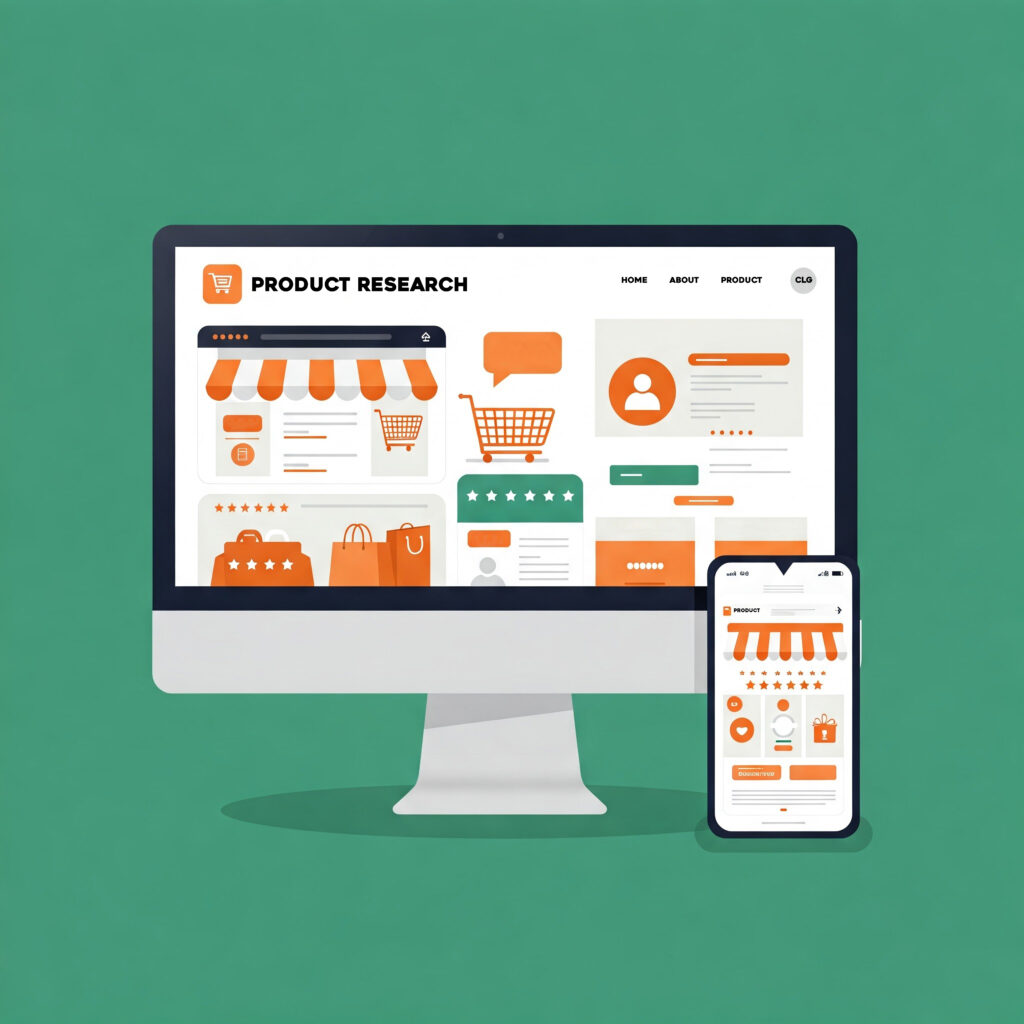
In today’s fiercely competitive e-commerce landscape, merely having an online presence isn’t enough. Success requires strategic decisions rooted deeply in data-driven insights, and this is where product research becomes indispensable. For e-commerce businesses looking to grow sustainably and outperform competitors, robust product research is foundational—it ensures that resources are effectively allocated, market needs are fully understood, and customer satisfaction is consistently maintained. In this blog, we’ll explore why product research matters and how it can significantly impact your e-commerce business.

Understanding Product Research
Product research involves a detailed analysis of potential products you intend to sell, including understanding market demand, identifying profitable niches, evaluating competition, and assessing long-term viability. It’s a systematic approach that provides a solid foundation for informed business decisions, ultimately mitigating risks and maximizing profitability.

Why is Product Research Crucial for E-Commerce?
1. Identifying Market Demand
Without comprehensive product research, you’re essentially gambling. Research helps verify if there’s sufficient market interest before investing your resources. Using analytical tools like Google Trends, Amazon Best Sellers, or SEMrush, businesses can evaluate trends, seasonality, and consumer interest.
Example: Suppose market analysis shows a rising demand for sustainable products. An e-commerce store can capitalize on this by sourcing eco-friendly items, thus capturing a growing market segment.
2. Spotting Market Gaps and Opportunities
Detailed product research allows e-commerce entrepreneurs to identify underserved niches or areas with high demand but low competition. It can help you recognize product shortcomings among competitors and introduce innovative solutions to meet unmet customer needs effectively.
Example: After analyzing customer reviews of existing fitness products, you discover many customers complain about durability. Offering a higher-quality alternative positions your business advantageously.
3. Analyzing Competition
Understanding your competition helps you refine your pricing strategies, marketing tactics, and product positioning. Conducting competitive research involves analyzing competitor product offerings, pricing, reviews, and their overall online presence.
Example: If competitors lack clear product descriptions or professional product images, your business can focus on high-quality visuals and detailed product copywriting to differentiate your offering and win customers.

4. Forecasting Profitability and Reducing Risk
Product research helps forecast potential profitability. It considers costs, pricing strategy, potential sales volume, and profit margins. Reliable data and informed predictions lower risk by preventing costly mistakes, such as investing in products with declining demand.
Example: If market analysis suggests smartphone accessories have declining margins due to market saturation, you can pivot your strategy towards emerging categories like smart-home accessories.
4. Improving Inventory Management
Effective product research guides inventory decisions, ensuring adequate stock levels aligned with actual demand. This reduces the risks associated with overstocking (wasting resources) or understocking (lost sales opportunities).
Example: By accurately forecasting demand through product research, you avoid unnecessary storage costs, reduce unsold stock risks, and streamline cash flow management.
5. Enhanced Customer Satisfaction and Loyalty
Detailed knowledge about customer preferences gathered through product research allows businesses to offer highly targeted products that resonate strongly with their audience. Providing exactly what customers want strengthens brand loyalty and increases customer lifetime value.
Example: E-commerce brands that closely monitor customer feedback to introduce requested product improvements (e.g., additional colors, sizes, or features) build a strong community of repeat buyers.

Tools for Effective Product Research
Leveraging the right tools is critical for conducting efficient and accurate product research:
- Amazon Product Research Tools: Jungle Scout, Helium 10
- Keyword and Trend Tools: Google Trends, Ahrefs, SEMrush
- Competitor Analysis: SimilarWeb, SpyFu
- Social Listening Tools: BuzzSumo, Mention
Incorporating these tools into your research processes can save significant time and enhance data-driven decision-making.

How Product Research Boosts Marketing Efficiency
Conducting in-depth product research not only benefits inventory and sales decisions but also strengthens your marketing strategy. When you thoroughly understand your products and target customers, creating compelling, targeted marketing campaigns becomes far easier. Precise messaging and relevant promotional activities improve conversion rates, lower marketing costs, and lead to higher ROI.
Final Thoughts
The significance of comprehensive product research for e-commerce businesses cannot be overstated. It is a critical step towards ensuring long-term success, profitability, and customer satisfaction. Companies that invest time and resources into understanding their products, market, and consumers can consistently stay ahead of competitors and adapt effectively to evolving market conditions.
Ready to enhance your e-commerce business through effective product research?
Start your journey today and position your brand for lasting growth.


